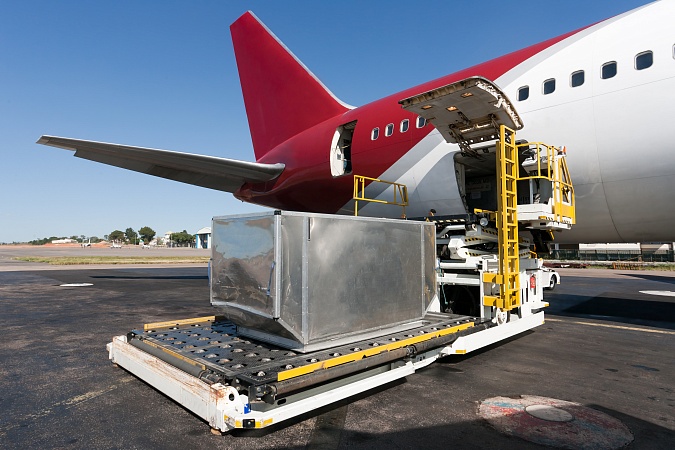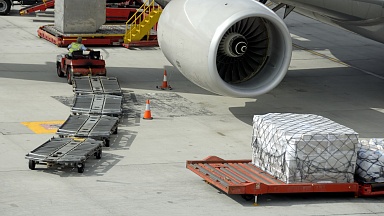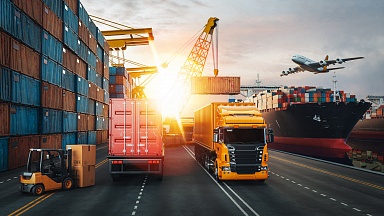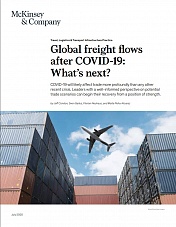Constrained capacity, a surge in the roll-out of vaccine shipments worldwide, and already buoyant demand in the air cargo sector for other commodities are likely to keep air freight rates at their current buoyant levels for some time to come, according to a senior executive at a leading air charter broker.
Chapman Freeborn’s head of cargo, Pierre Van der Stichele, told Lloyd’s Loading List in an interview that prices for full freighter charters had been very high until the start of Chinese New Year (CNY), with examples of near to $1million per flight for a B747F or equivalent from Asia to Central Europe. Since CNY, those prices had since slipped to $500,000-600,000, albeit with a fair bit of fluctuation from one week to the next; but he believes prices are set to rise again.
«I really don’t know whether this a sign of a downward trend but I certainly wouldn’t bet on it,» he noted. «Rates are more likely to increase again because if you’re trying to find a 100-tonne capacity pure freighter at the moment, it’s still super hard.»
He said capacity was stretched on most of the major routes for air cargo Asia-Europe, Asia-USA, Asia-LATAM, Europe- USA, Europe-LATAM, and Asia/Europe-Africa.
«Right now, the demand for cargo is very strong and there are no signs of a swift recovery in capacity and the core fleet of freighters is fully committed until at least December 2021,» he noted.
Transpac charter rates rebounding
Mads Ravn, global head of air freight procurement at freight forwarder DSV, told Lloyd’s Loading List this month that customers have been seeing prices go up again already since the end of February on Asia-US routes. He said demand ex-China since the end of Chinese New Year (CNY) had been «less explosive» than expected, but it was rising rapidly now.
«We didn’t see as explosive a start as we expected, but we are seeing it coming now for the rest of March, which is also one of the reasons why we have decided to take on more capacity also on the transpacific,» he noted.
He said the year had started out with «quite a bit of a drop» in air freight prices from China to the US, which continued all the way to Chinese New Year.
«We are, however, seeing it going up quite drastically now again. We haven’t hit the million-dollar mark for charters yet coming in on the transpacific into the United States, but we are getting closer. There is no more capacity on the lane. And if you wanted to charter now here in mid-March, you’re more likely will be hitting the million-dollar mark again.»
He believes this return towards million-dollar air freight charters will be «short term», adding: «We don’t believe that’s going to stick for very long. But it does look like it will happen for just a couple of weeks towards the end of Q1.»
Two-week lead times
Asked about lead times if shippers/forwarders came to Chapman Freeborn today with an ad hoc shipment requiring 100 tonnes of maindeck capacity between China and Europe and how they compared with the end of last and the early weeks of 2021, he replied: «If you take the very busy China-Europe trade lane, I would say about two weeks versus a month previously. When we are tasked to source an aircraft on a given day, the client must be ready to make a snap decisions, otherwise the aircraft availability would be gone.
«It continues to be a far easier task finding space on the traditionally weaker return leg to China and we could accommodate requests for sizeable loads eastbound to be offloaded en route (to China) without any real difficulty.»
However, while maindeck capacity remains very tight, there has been some relief from the squeeze in the form of the growing number of passenger aircraft — operating in cargo-only mode — so-called preighters, with the most popular types Chapman Freeborn is marketing being A321s and A330s, Van der Stichele explained.
«Of course, none of these cargo-only passenger aircraft can take 100 tonnes, so we can propose multiple flight solutions to uplift the full load and this is very common at the moment. More than half of our work in air cargo charters currently is with pax freighters. Without such an option the market would be in a very sorry state.»
Turning to the logistics to deliver COVID-19 vaccines worldwide, he said airborne shipments were now starting to gather momentum.
«We didn’t see any vaccines until probably two or three weeks ago. Europe was being served first and most of the distribution was done by truck or a few operators, like the major integrators, were flying them around as they have dedicated cool chains.
«Now people are starting to look into longer distance, ’thin’ routes for the vaccines where you don’t necessarily need a B747 but you could use a preighter and fly to a small country in Africa, for instance. Quite a few of these aircraft are being put to work to carry vaccines. Doses requiring dry ice are going in the bellyhold and those that can stored be at between 2-8 degrees Celsius in the passenger cabin.»
Limitations of preighters
He continued: «Right now, there’s quite a glut of preighters, which are flying relatively cheaply; but as far as the passenger cabin is concerned, you’re limited to cargo that can only be hand-carried on to the aircraft, making it unlikely that individual shipments can exceed 40 kilos. Then there’s the dimensions of the door into the passenger cabin to take into account.
«Also, you can’t take dangerous goods into the cabin or shipments containing batteries, for example, for mobile phones and laptops. So, the preighters are really limited for e-commerce goods; but for vaccines, they largely fit the bill.»
Asked how he expected air cargo capacity and rates to evolve over the next few months, Van der Stichele noted: «It’s guesswork. I have a feeling that given we still have a significant shortage of capacity for pure freighters, coupled with strong demand for the shipment of vaccines continuing for the foreseeable future and sustained buoyancy in air cargo market generally, prices will remain where they are now — that is, quite high but not as high as we saw pre-Christmas 2020, and staying there for at least the rest of the year.»
Longer-term view
Casting his eye longer term, Van der Stichele said a capacity squeeze could well be transformed into over-supply in the coming years. «There’s this massive push to convert passenger aircraft into freighters and people are rushing to buy into that. All the slots for such work appear to be fully booked for the next year or two.»
He added: «Amazon recently announced that it will acquire US aircraft operator, ATSG and ATSG is looking at taking more than 20 B767s which I believe are not freighters and will probably have to be converted. It’s crazy. People are looking for things left, right and centre. There’ll come a time, perhaps two or three years down the line, when there’s going to be serious over capacity and that’s typical of what happens in the industry. Then some carriers could find themselves in a very difficult situation.»





